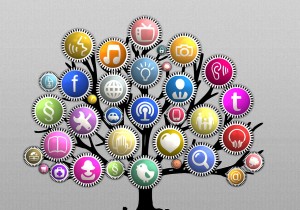In his State of the Union address, President Barack Obama emphasized innovation as the main driving force for producing the jobs of tomorrow (Obama, 2011). To ensure that the jobs of tomorrow will be in America and not overseas, Obama challenged the nation to win the race to educate our children in the fields of science, technology, engineering, and mathematics (STEM).
Innovation is defined as “…the creation and implementation of new processes, products, services and methods of delivery which result in significant improvements in outcomes, efficiency, effectiveness or quality. The keyword in the definition is “new,” where the newness, or the perception of newness, differentiates between change and innovation” (Agcaoili, 2012).
There are plenty of possibilities in education provide learning opportunities to inspire innovative thinking, but we need to focus on finding specific ideas for promoting STEM learning. These opportunities involve students in the learning process as active agents in constructing their own knowledge, rather than just passive recipients of knowledge from teachers. Knowledge construction is also facilitated in a social context or through collaborative efforts toward shared objectives or challenges brought about by different perspectives (Pea, 1997).
In order to inspire innovative thinking we need to promote STEM learning through allowing for play and constructive learning that allows students to work together to conduct research, share their results, and perform or produce a final project. Vygotsky (1962) advocates for not only student-student collaboration, but also expert-student collaboration on real world problems.
Innovative thinking is often the forgotten piece of STEM. School librarians can respond to this gap by promoting and integrating technologies that will inspire innovative thinking in students. One such way is through encouraging the most current emerging technologies that will promote STEM learning, such as apps. Last week I presented at the NYC School Library System Annual Fall Conference on apps for teaching and learning and several of these, taken from the AASL Best Apps lists, present just such learning opportunities. The apps in the STEM category provide a way for students to construct knowledge and be innovative, as well as collaborate with each other and share in a social context. Also think about the ways that you as the school librarian can facilitate this expert-student collaboration through using technologies. STEM education provides a great opportunity for school librarians to work with teachers to create learning experiences that inspire students’ innovative thinking!
References
Agcaoili, K. (2012). Google apps: An opportunity to collaborate (Doctoral dissertation). Retrieved from Dissertation Abstracts International.
Obama, B. (2011). Remarks by the President in State of the Union Address. Retrieved from http://www.whitehouse.gov/the-press-office/2011/01/25/remarks-president-state-union-address
Pea, R. D. (1997). Practices of distributed intelligence and designs for education. In G. Salomon (Ed.). Distributed cognitions: Psychological and educational considerations (pp. 47-87). New York: Cambridge University Press.
Vygotsky, L. S. (1962). Thought and language. Cambridge, MA: MIT Press.

